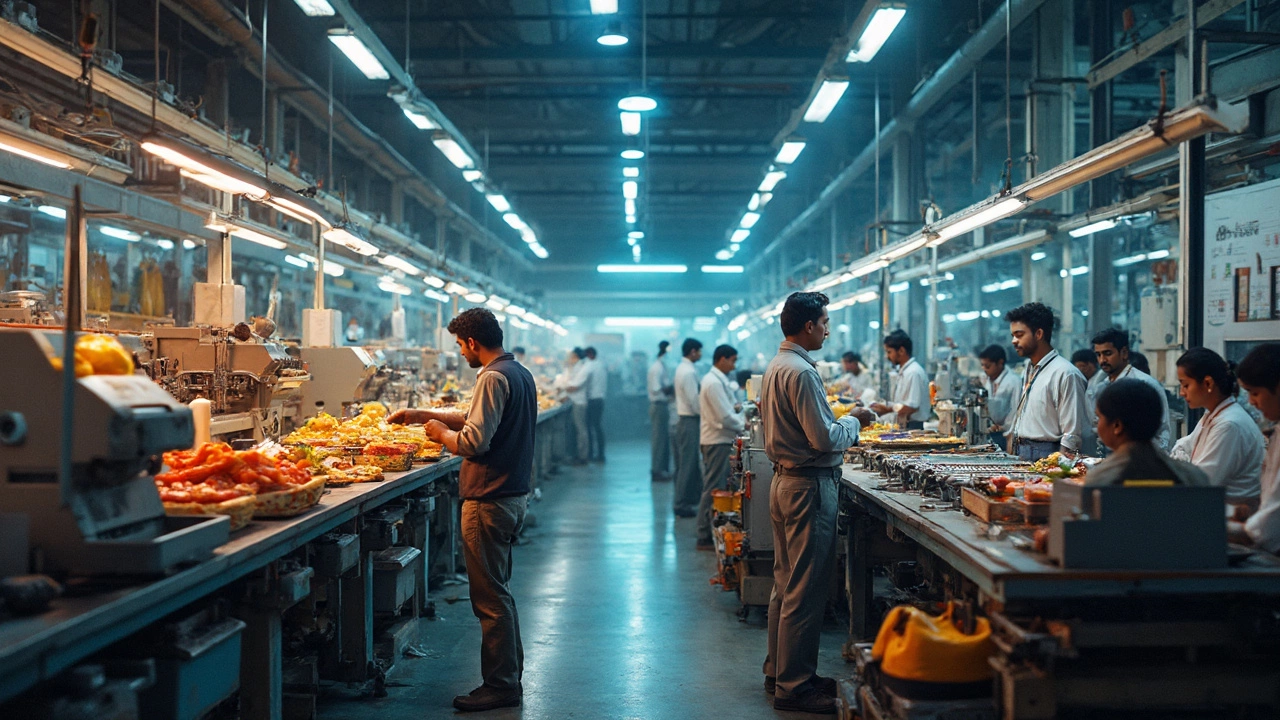Factory Startups: What They Are and Why They Matter
When exploring factory startups, newly created manufacturing businesses that aim to launch innovative products or processes. Also known as manufacturing ventures, it represents the spark that turns fresh ideas into real‑world factories.
One of the biggest drivers is manufacturing innovation, the development of new production methods, materials, or business models that improve efficiency or create novel products. When a startup embraces this, it can shake up whole supply chains and open doors to markets that were previously out of reach. Another critical piece is sustainable manufacturing, eco‑friendly production that reduces waste, energy use, and emissions while maintaining quality. This not only meets growing consumer demand for green products but also cuts long‑term costs. Finally, securing venture capital, investment funds that provide the financial muscle for early‑stage companies to scale quickly often makes the difference between a prototype and a full‑scale plant.
Key Factors Driving Factory Startups
First, technology adoption is accelerating. Additive manufacturing, AI‑driven quality control, and IoT‑linked equipment let a small team design, test, and produce at speeds that previously required massive factories. Second, policy support is boosting confidence. Incentives for green production, tax breaks for new plants, and simplified licensing cut the barrier to entry for aspiring entrepreneurs. Third, talent pools are expanding. Engineering graduates from Indian institutes are increasingly interested in entrepreneurship, creating a workforce ready to tackle complex production challenges.
These forces combine to create a fertile ecosystem. For example, a startup focusing on recycled plastics can leverage AI to sort waste, use low‑energy extrusion, and attract investors eager to back circular economy projects. The resulting factory not only meets a market gap but also aligns with sustainability goals, making it easier to win government contracts.
However, challenges remain. Capital intensity is a reality; even a modest 10,000‑square‑meter plant can require several crores in equipment. Regulatory compliance, especially around safety and environmental standards, adds another layer of complexity. Moreover, scaling production while keeping quality consistent demands robust process engineering—something many founders underestimate.
To navigate these hurdles, many founders adopt a phased approach. They start with a pilot line, validate market demand, and then reinvest profits or raise fresh rounds of funding. Partnerships with established OEMs can also provide access to mature supply chains and distribution networks, reducing the risk of isolation.
Another practical tip is to focus on niche markets before expanding. A factory startup that specializes in high‑performance graphene composites for aerospace, for instance, can command premium prices and build a reputation that later supports diversification into automotive or consumer electronics.
When it comes to workforce, blending experienced plant managers with younger engineers creates a dynamic where traditional know‑how meets digital fluency. This hybrid talent model helps factories stay adaptable, especially as market trends shift toward customization and short run‑length production.
From an investment standpoint, showing a clear path to profitability is crucial. Investors look for metrics like unit cost reduction over time, capacity utilization rates, and the ability to secure long‑term contracts. Transparent financial modeling and realistic timelines build trust and increase the likelihood of securing that essential venture capital infusion.
Looking ahead, the rise of Industry 4.0 will further lower the entry threshold. Modular equipment, plug‑and‑play software platforms, and cloud‑based analytics mean a startup can set up a smart factory in a fraction of the time it took a decade ago. This democratization of advanced manufacturing tools is already evident in regions across India, where government-backed incubators provide access to shared machinery and mentorship.
In short, factory startups sit at the intersection of technology, policy, talent, and finance. By understanding how each piece fits together, aspiring founders can craft strategies that turn innovative concepts into thriving production hubs.
Below you’ll find a curated list of articles covering everything from funding tips and market analysis to real‑world case studies of Indian manufacturing ventures. Dive in to see how these ideas play out across different sectors, and get the actionable insights you need to launch or grow your own factory startup.
What Business Makes a Lot of Money? Best Manufacturing Business Ideas that Actually Work
Wondering what kind of manufacturing business actually brings in the big bucks? This article breaks down real-world manufacturing business ideas that rack up impressive profits, busting myths and skipping the fluff. Find out which industries are expanding fast, how much cash you truly need to start, and what clever tricks insiders use to cut costs and ramp up revenue. Plus, spot where most newbies trip and ways to avoid their mistakes. If you’ve ever thought about building a money-making machine from scratch, this one’s packed with practical tips.
- manufacturing
- India
- food processing
- garden tips
- rice cultivation
- government schemes
- balcony garden
- urban gardening
- balcony gardening
- profitable business
- business ideas
- plastic manufacturing
- drip irrigation
- plant care
- steel manufacturing
- sustainable gardening
- startup ideas
- steel industry
- flower gardening
- textile manufacturers






